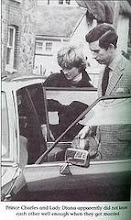You may have noticed that I have a few graphic novels on my bedside table these days, and they look an awful lot like comic books. To learn to appreciate what these texts have in them, I've just started Scott McCloud's Understanding Comics, and it's fascinating. In a diagram detailing the range of abstraction in both visual and textual symbols, he places Kandinsky at the top... as far as you can get from both visual realism and textual symbolism. Given the recent knee-jerk reactions I've been hearing recently about a number of unorthodox textual types, I thought it might be fun to quote a little bit from a lecture Wassily Kandinsky gave in Cologne in 1914:
There were three distinct periods in my development:
1. The dilettantism of my childhood and youth, a time of confused and for the most part tormented feelings, and, at least to me, obscure longings.
2. The time after leaving school, when my feelings assumed a more distinct and, to me, clearer character. I tried to express them through external forms of all kinds borrowed from external nature, through objects.
3. The time of conscious utilization of the pictorial elements, when I became aware that, for me, real form was superfluous, when, step by painful step, I became more able to find within myself not only the content but the form appropriate to it--a time therefore of transition to pure painting, also known as absolute painting and the achievement of the abstract form necessary to me.
On this long road, which I had no alternative but to go down, I wasted a great deal of energy in my struggle with traditional art. One prejudice crumbled after another, but infinitely slowly. Apart from all my experiments, I devoted a lot of time to thinking, hoping to find the answers to many things through logic. But what was logically so simple was impossible to achieve in practice. As a general rule it is easy enough to draw the right conclusions, and for the most part it is an enjoyable task. We know what we want rather more often than we know how to bring it about. The how is never truly right unless it presents itself spontaneously, so that the hand benefits from a happy inspiration--not only independent of reason, but often against all reason--and itself achieves what is needed. Only a form arrived at in this way brings satisfaction, and a joy that is beyond all comparison.
Friday, September 14, 2007
Subscribe to:
Post Comments (Atom)




1 comment:
What a wonderful choice of quotation from Kandinsky, a philosophy that all true artists seek for their own expression. Some might call it justification for "doing their own thing".
Post a Comment